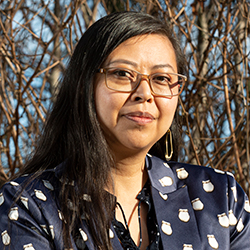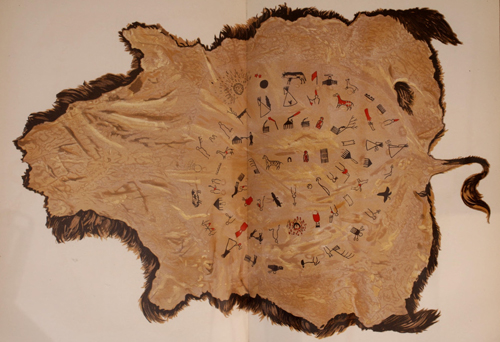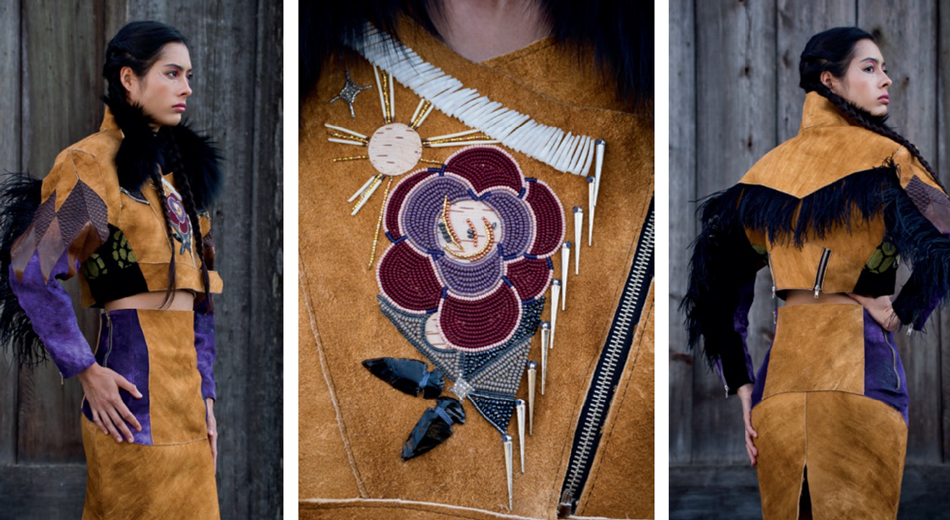 “My niece always says, ‘What a time to be alive.’ She’s absolutely right. There’s so much potential in us to learn from our history and see the world through an artist’s eyes, filled with wonder and hope.”
“My niece always says, ‘What a time to be alive.’ She’s absolutely right. There’s so much potential in us to learn from our history and see the world through an artist’s eyes, filled with wonder and hope.”
— Miranda Belarde-Lewis
Miranda Belarde-Lewis (Zuni/Tlingit) explored the ways Native artists use traditional art forms to document time in a webinar hosted by Humanities Washington on Feb. 28.
Belarde-Lewis, an assistant professor and the inaugural Joe and Jill McKinstry Endowed Faculty Fellow in Native North American Indigenous Knowledge at the UW Information School, told an audience of more than 300 people online about how Native communities have logged historical events for thousands of years through art and how Native artists continue to do so for current events. She shared insight and thoughtful reflections on how we can all use artful methods to document our own lives.

“Many Native artists are the recipients of thousands of years of experimentation and knowledge,” said Belarde-Lewis. “These artists make our world visible to us in unexpected ways.”
Starting with more temporal forms of documentation, Belarde-Lewis shared the example of Winter Counts recorded on buffalo hides. A caretaker or recorder in each family was charged with picking an image to represent each year, making Winter Counts a way to recite and recall the historical events important to the family.
“It's important to remember how these are systems of knowledge that have developed for hundreds and sometimes thousands of years and that they are meant to carry forward into the future,” said Belarde-Lewis.

Belarde-Lewis introduced how the use of ledger art as a form of documentation came about after buffalo were eradicated. Ledger art refers to narrative drawing on paper or cloth predominantly used by Natives from the Plains.
She shared the work of several Native artists including Howling Wolf, one of the originators of ledger art. Belarde-Lewis also displayed the work of Native women who have used ledger art to document their perspective throughout time. Among the examples Belarde-Lewis provided were art pieces that document events including the protest of museums, the extinction of different species, and even the COVID-19 pandemic.
“Ledger art is a witness to what is happening and what is soon to be lost,” said Belarde-Lewis.
In her presentation, Belarde-Lewis also shared the work of Indigenous artists such as fashion designer and artist Sho Sho Esquiro, documenting, remembering and celebrating self-determination.
The webinar came to an end with a Q&A session open to the audience and a call to support Native artists.
In closing, Belarde-Lewis reminded the audience that “there is so much wonder and hope provided to us through art. Native art especially shows us how we can contribute to a historical record through our making. What we make and what we create can all contribute to a living archive.”
